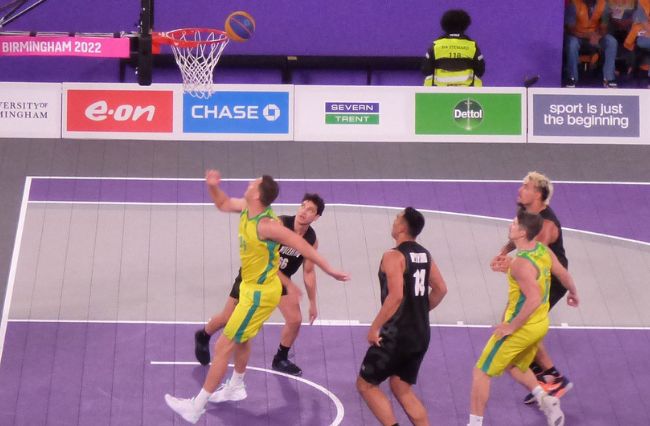The age old pearl of wisdom ‘a champion team will always beat a team of champions’ is used in sport with embarrassing frequency, and justifiably so.
It’s blindingly apparent that any good AFL team will be carrying few, if any, players through games, and that any team who wins a premiership will have absolutely none at all.
‘We didn’t have enough of our good players playing well,’ uttered then Collingwood coach Mick Malthouse after the Pies’ loss to Geelong in the 2011 Grand Final.
That statement in itself separates the class gap between the two; Collingwood had to rely on its ‘better’ players to get the job done, whereas Geelong played top class football regardless of how the Joel Selwoods, Steve Johnsons and James Kellys of the team faired.
Incidentally they all played well, but then so did Scott Pendlebury, Luke Ball and Steele Sidebottom. So who provided the separation?
It’s easy to talk about Jimmy Bartel’s 26 disposals and three-goals which earned him the Norm Smith, or Tom Hawkins’ second half obliteration of All-Australian centre-half-back Ben Reid. That’s the glamorous part of footy that we all go to watch, that’s what we remember.
Perhaps, those two were the difference in the end, but what kept Geelong in the game long enough for Bartel and Hawkins to shine?
It was Travis Varcoe’s 21 disposal, three goal outing that eclipsed Sharrod Wellinghams 12 touches and singular goal.
Andrew Mackie’s 16 disposals, six marks, three tackles and his rebounding effort out of defence proved more damaging than Alan Didak’s meagre nine disposals.
Tom Lonergan got his hands on the football just five times for the game, but he did what Harry Taylor could not, and blanketed the indomitable Travis Cloke.
Lets go back even further to the drawn grand final of 2010 between the Pies’ and St. Kilda. Steele Sidebottom notched a respectable tally of 19 disposals, five marks and four tackles. The next week his numbers were 25 disposals, six marks, four tackles and two goals.
Similarly, Wellingham totalled 13 disposals, five tackles, and zero goals in the first grand final. He lifted the next week to tally 20 disposals, eight tackles and two goals.
Results like this across the board, and the key concept is that it was across the board resulted in a Collingwood premiership.
This trend continues right back to the legendary teams of the early 2000’s like Essendon and Brisbane, who were just flat out better than every other team, no matter which way you look at it.
The point being is, any team will need its second tier talent to lift in order to win a premiership, and come crunch time, maybe we should look past the elite and into those players who constantly toil away unnoticed, as they may ultimately prove the difference.
Individual, unremarkable, even sometimes unsightly, efforts behind the scenes are what separates the top-eight from the rest, and that is why West Coast, Adelaide, Sydney and Essendon are, for the moment, the form teams of the league.
Geelong, Carlton and Hawthorn all have an abundance of second tier talent, but most of Geelong’s has seen too many pre-seasons, or too few, Hawthorn’s is slowly working into form, and most of Carlton’s is severely underperforming.
The following men are by no means superstars, and although we are only a third of the way through the season, they deserve be looked at come finals, as ultimately, they may become crucial game breakers.
West Coast- Quentin Lynch:
While not as damaging as the currently injured Josh Kennedy, or as mobile as the young star Jack Darling, Lynch has proven himself to be a dependable pillar of strength. Given the Eagles injury woes, in the ruck with Nic Naitanui, Lynch will prove his worth as a dual position player. If nothing else, he is great for the Eagles’ structure.
Adelaide- Brent Reilly:
A picture of consistency, Reilly is an unseen yet important cog in Adelaide’s now highly effective midfield. Averaging 21 disposals, six marks, two clearances and over two rebound 50’s in 2012.
Essendon- Ben Howlett:
One of the few Essendon players who isn’t susceptible to petty niggles, Howlett has proven himself extremely durable, and has a penchant for winning the hard ball. He continues to improve, and has developed into a veritable tackling machine, averaging nearly eight per game.
Sydney- Craig Bird:
In 2011 Craig Bird announced himself as Sydney’s number one tagging option. He is small, tough, and effective in the clinches. Averaging over five tackles per game in the ’11 season, he has so far increased that statistic in 2012, as well as averaging over three clearances a game in 2012.
Collingwood- Dayne Beams:
No Luke Ball by any stretch of the imagination, but Dayne Beams has been phenomenal in Ball’s absence. Wins big numbers, can lay a tackle with the best of them, and provides constant delivery into the forward 50, but its Beams’ clearance work that has impressed the most.
Hawthorn- Brendan Whitecross:
All round solid midfielder/small forward. Can find the uncontested footy thanks to his gut running ability, and is capable of winning the contested ball. A fairly unassuming player, but Whitecross is slowly implementing himself in the Hawks’ line-up.
Carlton- Kade Simpson:
Messrs Marc Murphy, Chris Judd and Bryce Gibbs constantly overshadow Kade Simpson, despite the latter’s form now bordering on the elite level. He is that quintessential old-fashioned wingman everyone loves to watch, and will collect 20 disposals and a goal every game, without fail. Over 150 games on the trot have exhibited Simpson’s durability and consistency.
Fremantle- Ryan Crowley:
Ryan Crowley is listed here purely because of his effectiveness as a tagger this season. While his tactics sometimes border on illegal (referring to his effort Chris Judd), he usually gets the job done. Crowley is capable of winning his own ball as well as restricting his opposition’s, and taggers that do this are worth their weight in gold.
With the 2012 competition enthrallingly even, it could come down to the most inconspicuous feat from the most subtle of men that determines ultimate success.
Michael Pollock is a third-year Bachelor of Journalism student at La Trobe University. You can follow him on Twitter @mppollock.






